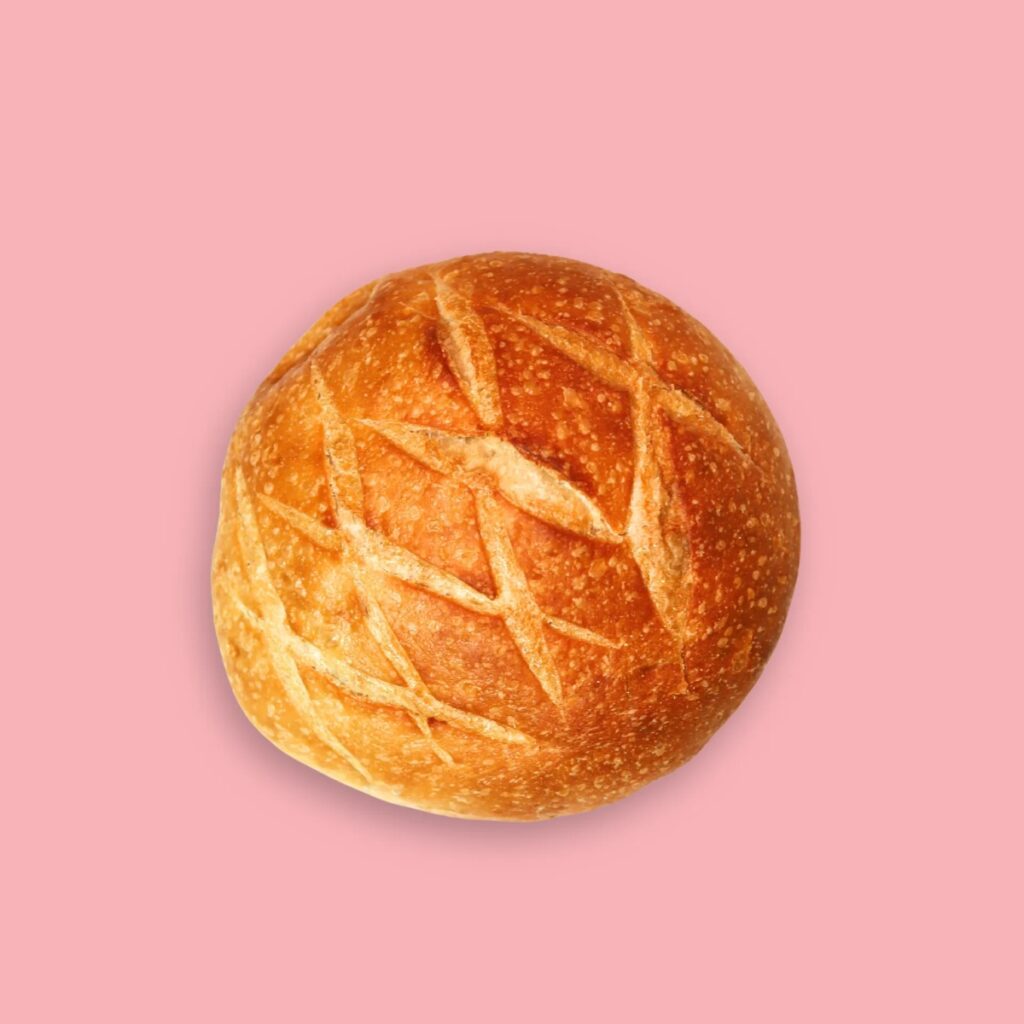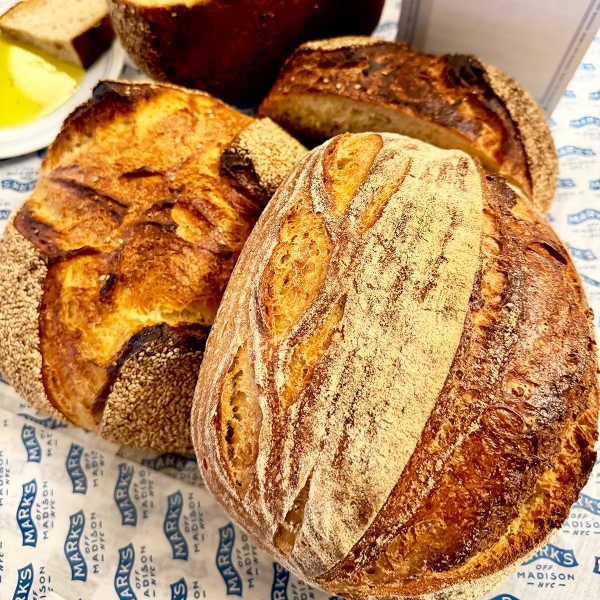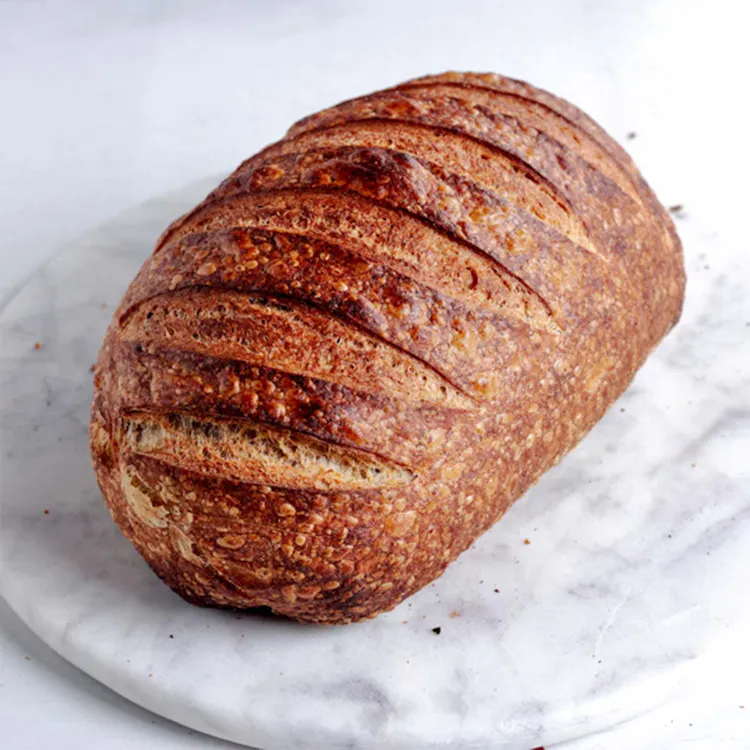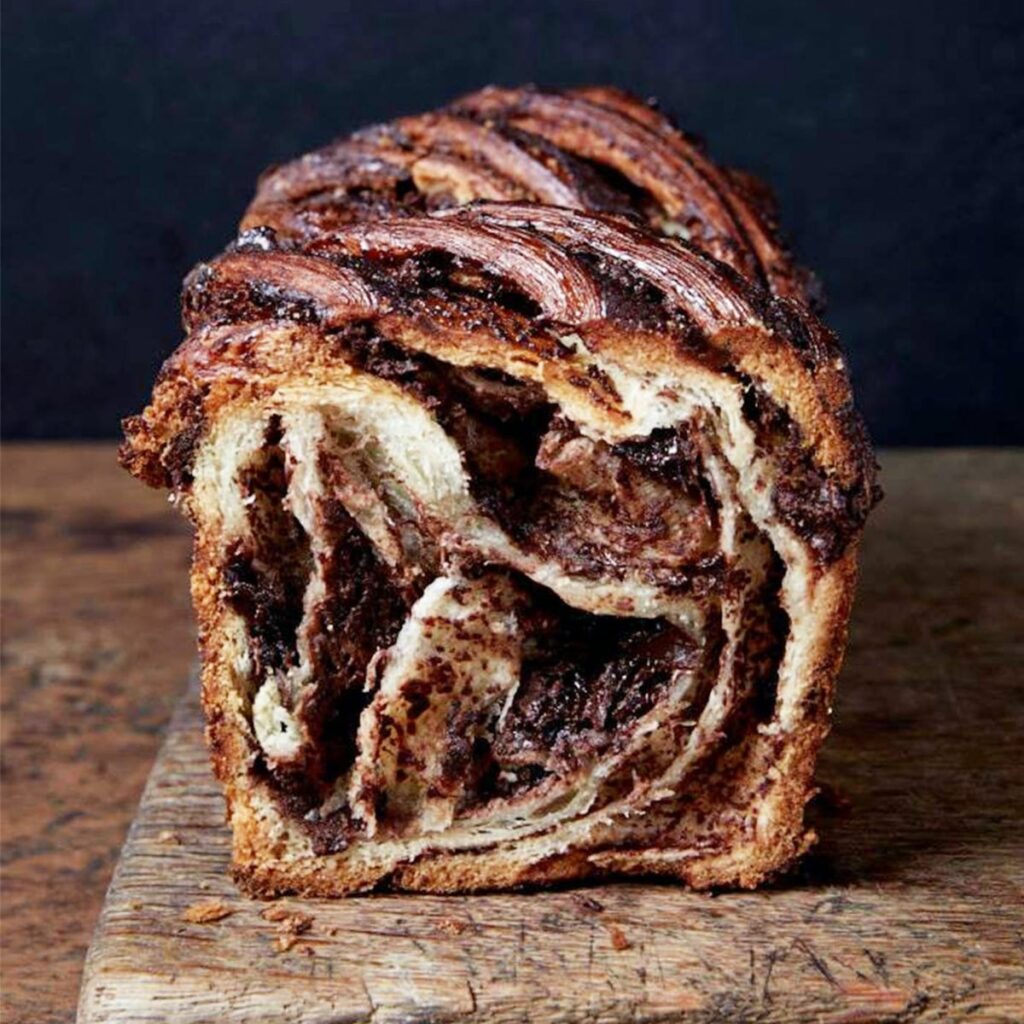In this article
A Quick Guide for How to Make Sourdough Bread
Are you finally catching on to the sourdough craze? It looks pretty complicated, but don’t worry. Sourdough can be accessible for bakers of all experience levels! From long-rise loaves made in a dutch oven to quick breads you can make in less than an hour, you’ll love having the aroma of fresh savory bakes floating through your house instead of pastries. Here’s what you need to know about how to make sourdough bread.
What is the secret to making good sourdough bread?
Two things make good sourdough bread: a bubbly and active starter, and practice. The starter, sometimes called the mother, is a mix of flour and water that has transformed into a magical live culture with natural yeast and good bacteria. It’s what will help your dough ferment, rise, and get all those bubbles in the finished loaf — plus a delightfully crispy crust. If you don’t already have a starter, King Arthur Flour’s recipe is great. Just remember it can take about 10 days to get your starter ready to bake with, so plan accordingly.
What are the steps of making sourdough?
Making sourdough bread can be broken down into a few steps: feed, mix, rise, rise again, shape, rise once more, and bake. Don’t worry, it’s not as complicated as it seems! Here’s what to do.
- Feed your starter. You want to get your starter super active (bubbly) and doubled or tripled in size before using it to bake. So add some flour and water (even a couple tablespoons should be fine), and let it sit at room temperature until it peaks in size. That’s when it’s ready to use!
- Mix your dough. Add together some starter (about 150 grams) with warm water (250 grams), bread flour (500 grams), and salt (9 grams). It helps to have a food scale so you can get these measurements exact. Mix it together until everything’s incorporated and the dough pulls off the side of the bowl during mixing.
- Let the dough rise. Cover the bowl with a tea towel or plastic wrap and leave it sit for about an hour. Then mix the dough up again. This will be done through a series of folds. You’ll pick up one edge of the dough and let it fall back down onto the top of the rest of it, then repeat that three or four more times until the dough becomes more smooth than shaggy.
- Let it rise again. This is called the “bulk fermentation” stage. You’ll let the dough sit (covered, of course) for up to 12 hours, or until it’s doubled in size.
- Shape your dough. Decide how you want your bread to look. For a boule, shape it into a ball. For a sandwich bread pan or dutch oven bread, put that ball right into the baking pan. You can also cut it into smaller roll shapes or really any shape you want it to be.
- Rise again! Cover the shaped dough and let it rise for another 30 minutes to an hour.
- Bake your bread. Score the top of the dough with a sharp knife and bake it at 450 for about an hour. It’s done when the internal temperature is about 205 and the loaf sounds hollow when you tap it on the bottom.
Don’t cut into your bread right away! Let it rest for at least an hour before diving in.
Sourdough troubleshooting
Every loaf of sourdough is different. And that’s not always a good thing. These are the most common problems with your sourdough dough and loaf, and how to resolve them.
My dough won’t rise
It’s likely you’re in a colder environment or your starter wasn’t active. Try putting the dough in a warmer place and see if that helps.
My dough is too loose
Keep mixing it! It’s possible you just haven’t worked the dough enough. If it’s really sticky and loose, you probably have too much moisture in the dough. Keep some of the water out next time.
My bread won’t rise in the oven
This is most likely due to under- or over-rising.
My finished bread is super dense
You did not let your dough rise enough. Experiment with extending the rise time when you prepare your next batch of dough.
Is sourdough healthier for you than regular bread?
Sourdough fiends, you’re in luck! The crusty loaf is actually healthier for you than regular bread — especially if that bread is mass produced. Mass produced bread is stuffed full of preservatives and other ingredients designed for shelf life, not necessarily freshness. Sourdough, when you make it at home, has very few ingredients: salt, flour, and water. On the more scientific end, when sourdough ferments, it introduces lactic acid to the bread, and lactic acid makes it easier for us to absorb all the nutrients in our food. Fermentation also makes sourdough easier to digest, because it breaks down some of the gluten in the dough. Keep in mind it’s not gluten-free, though! Sourdough is also stuffed full of prebiotics (thanks again, fermentation!) so your gut biome stays healthier.
Not ready to try making your own sourdough yet? Don’t worry — Goldbelly will ship some of the country’s most famous bread (or your favorite French, Italian, and American food) right to your door.












